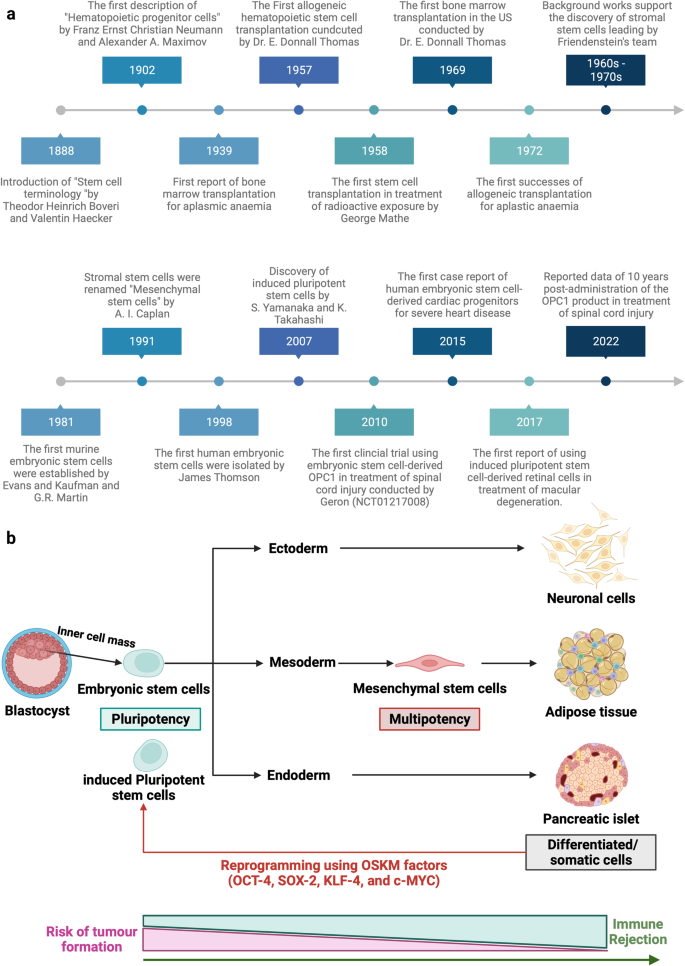Table of Contents

[/image][=video]
[/video]
A lot of sites utilized for bone marrow harvesting are located in the hip bones and the sternum. In healing, the benefactor might experience some discomfort in the areas where the needle was put.

If an autologous transplant is prepared, formerly gathered stem cells, from either peripheral (apheresis) or harvest, are counted, evaluated, and all set to infuse. The prep work for a bone marrow transplant vary relying on the kind of transplant, the condition requiring transplant, and your resistance for certain medications. Consider the following: Many often, high doses of radiation treatment and/or radiation are included in the preparations.
Ablative treatment avoids this procedure of cell manufacturing and the marrow comes to be vacant. An empty marrow is needed to make room for the new stem cells to expand and establish a new blood cell manufacturing system.
It is not an operation to put the marrow right into the bone, yet is similar to receiving a blood transfusion. The stem cells find their means into the bone marrow and begin duplicating and expanding new, healthy and balanced blood cells. After the transplant, supportive care is provided to prevent and deal with infections, side impacts of therapies, and complications.
Perimenopause Treatment
The days prior to transplant are counted as minus days. The day of transplant is thought about day zero. Engraftment and healing complying with the transplant are counted as plus days. For example, a person may go into the healthcare facility on day -8 for preparative regimen. The day of transplant is phoned number absolutely no. Days +1, +2, and so on, will adhere to.
The days are numbered to assist the patient and family members understand where they are in terms of threats and discharge preparation. Throughout infusion of bone marrow, the patient may experience the following: Pain Chills Fever Hives Breast pain After mixture, the person may: Invest a number of weeks in the healthcare facility Be very prone to infection Experience extreme bleeding Need blood transfusions Be confined to a clean environment Take numerous prescription antibiotics and various other medicines Be offered medication to stop graft-versus-host diseaseif the transplant was allogeneic.
Depending on the sort of transplant and the disease being dealt with, engraftment generally takes place around day +15 or +30. Blood matters will be inspected usually throughout the days following transplant to review initiation and progression of engraftment. Platelets are generally the last blood cell to recoup. Engraftment can be postponed due to infection, medications, low given away stem cell matter, or graft failure.
Antibiotics, antifungal medicines, and antiviral medications are commonly offered to try to prevent serious infection in the immunosuppressed person. Thrombocytopenia (reduced platelets) and anemia (low red blood cells), as an outcome of a nonfunctioning bone marrow, can be hazardous and even serious.
Discomfort related to mouth sores and intestinal (GI) irritation prevails. High dosages of chemotherapy and radiation can cause extreme mucositis (inflammation of the mouth and GI system). Liquid overload is a problem that can cause pneumonia, liver damages, and high blood stress. The main factor for liquid overload is because the kidneys can not stay on par with the huge quantity of fluid being given up the form of intravenous (IV) medications, nutrition, and blood products.
Medical Group in Farmington Hills, Michigan

Respiratory standing is an important function that might be compromised throughout transplant. Infection, inflammation of the respiratory tract, liquid overload, graft-versus-host condition, and bleeding are all potential deadly complications that may happen in the lungs and lung system. The liver and heart are necessary organs that might be harmed during the transplant procedure.
Failing of the graft (transplant) taking hold in the marrow is a prospective complication. Graft failing may happen as a result of infection, persistent condition, or if the stem cell matter of the contributed marrow wanted to create engraftment. Graft-versus-host disease (GVHD) can be a severe and serious complication of a bone marrow transplant.
As opposed to a body organ transplant where the patient's immune system will try to reject only the hair transplanted organ, in GVHD the brand-new or transplanted immune system can attack the whole individual and all of his or her body organs. This is since the new cells do not acknowledge the cells and organs of the recipient's body as self.

One of the most typical websites for GVHD are GI tract, liver, skin, and lungs. Prognosis significantly depends on the following: Sort of transplant Kind and level of the illness being dealt with Condition reaction to treatment Genetics Your age and total wellness Your tolerance of particular medications, procedures, or therapies Intensity of issues As with any procedure, in bone marrow transplant the prognosis and long-lasting survival can vary significantly from individual to person.
Menopause Treatment
Constant follow-up treatment is important for the patient following a bone marrow transplant. New approaches to enhance therapy and to lower problems and adverse effects of a bone marrow transplant are continuously being discovered.
Accessed June 5, 2017. The hope is to bring back broken tissue that will not sufficiently heal on its very own. Regenerative medicine treatments can be split into three classifications: facilitate recovery by infusing or placing live cells into the individual. Examples of cellular therapy consist of PRP and stem cell treatments, which can be made use of to deal with tendinopathy and other sporting activities injuries.
Phys Medication Rehabil Clin N Am. 2014; 25( 4 ):881 -95. As time passes, private physicians discover and share information, boosting the application of these therapies. See Are PRP Shots Effective?Until more is known, regenerative medication treatments are ruled out basic method and insurance coverage plans generally do not cover them. Many clients are prepared to pay out-of-pocket. is progressing swiftly with advancementsin stem cells, gene treatment, and cells engineering. This article explores these ingenious methodologies, highlighting their transformative possibility for tissue and organ repair service. are positioned to transform clinical treatments and improve client results. Cell regrowth, the procedure of restoring lost cells to recoup normal feature, differs across different cells and body organs. In Drosophila larval wing discs, cells resistant to apoptosis help tissue regrowth. Mouse figure tip regeneration is mediated by the blastema, containing numerous progenitor cells, as highlighted in this study.: The variety of cells within a cells can influence regeneration. Outer nerves, for instance, include Schwann cells, nerve fibroblasts, and immune cells, each playing a role in nerve regrowth, as discussed here. These aspects communicate dynamically, making cell regeneration a complex process that varies based on the certain cells or body organ. Cell regeneration plays a critical role in maintaining the body's total health and wellnessand health. It is accountable for fixing and replacing damaged or aging cells, ensuring the proper functioning of body organs and cells. Effective cell regeneration therapy can dramatically impact the therapy of numerous clinical conditions, consisting of degenerative illness, injuries, and even the aging process. A number of considerable milestones have actually marked the progress of cell regeneration research. In the late 18th century , Italian biologist Lazzaro Spallanzani performed pioneering experiments on the regrowth of amphibian limbs, offering proof for the regenerative ability of particular microorganisms. In the 20th century, the discovery of stem cells by Canadian researchers Ernest McCulloch and James Till changed the area. Harold E. Varmus, that played a critical role in clarifying the hereditary basis of cancer, and Dr. Michael S. Brown and Dr. Joseph L. Goldstein, that uncovered the role of low-density lipoprotein (LDL) receptors in cholesterol metabolic process. Stem cell therapy is just one of the most thoroughly researched and appealing branches of cell regrowth treatment. This irritant activates a localized inflammation reaction, which prompts the release of growth elements and the recruitment of regenerative cells. In time, the regenerative cells promote the repair and regrowth of injured tissues, providing relief to people experiencing persistent bone and joint pain or joint instability. Cartilage regrowth therapy concentrates on bring back harmed or deteriorated cartilage, which plays a crucial role in joint function and wheelchair. Some cells, such as epithelial cells in the skin or the cellular lining of the gastrointestinal system, have a high turnover price and can regenerate promptly. On the other hand, cells in the central nerve system, such as nerve cells, have actually limited regenerative capacity. This variation is mostly because of the complexity of the tissue, the visibility of inhibitory factors, and the cellular setting. Cell regeneration therapy supplies promising services for increasing wound healing and treating different injuries.
Navigation
Latest Posts
Perimenopause Treatment
Medical Group servicing Farmington Hills, Michigan
Medical Group around Farmington Hills